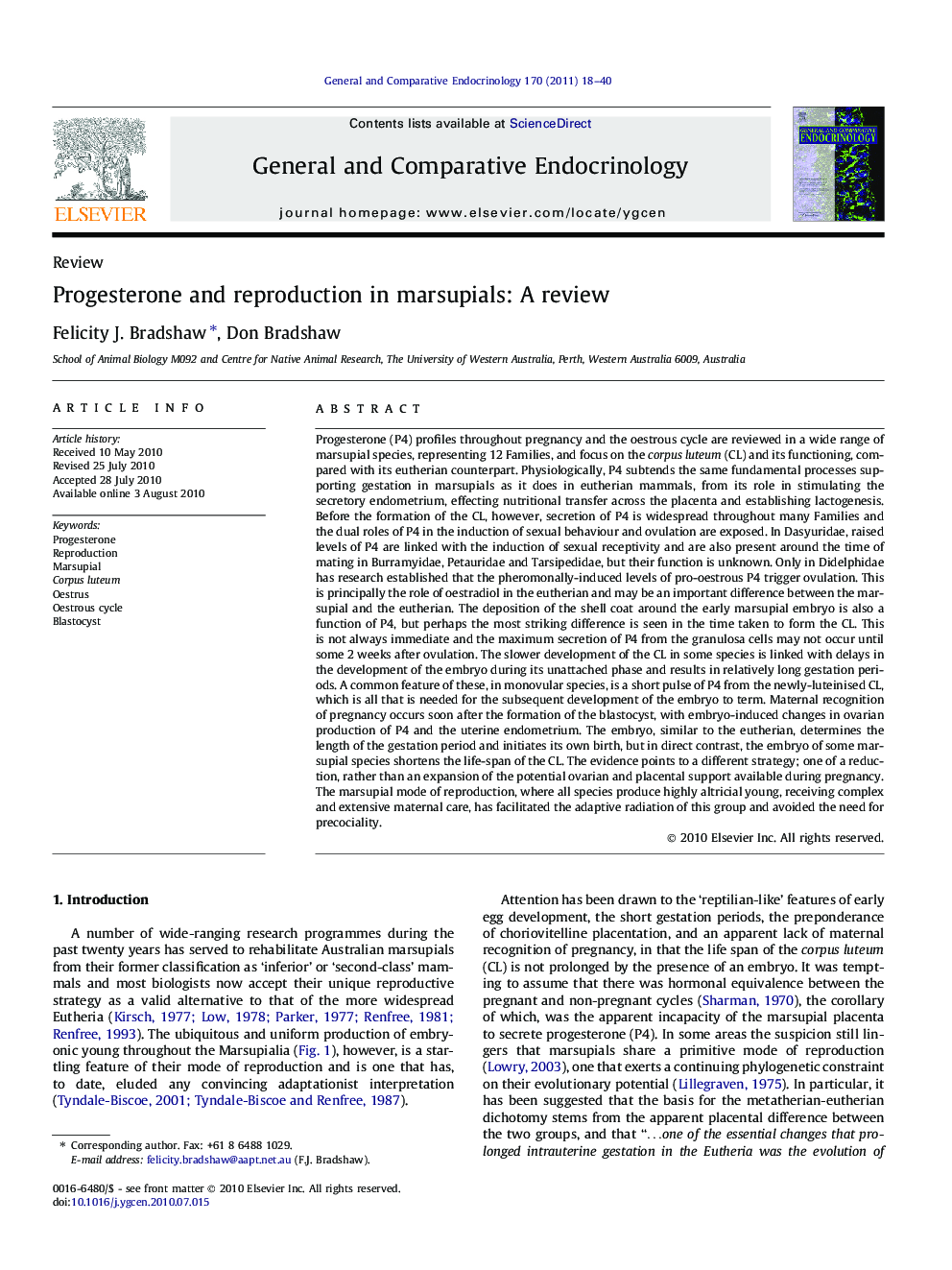| Article ID | Journal | Published Year | Pages | File Type |
|---|---|---|---|---|
| 2801038 | General and Comparative Endocrinology | 2011 | 23 Pages |
Progesterone (P4) profiles throughout pregnancy and the oestrous cycle are reviewed in a wide range of marsupial species, representing 12 Families, and focus on the corpus luteum (CL) and its functioning, compared with its eutherian counterpart. Physiologically, P4 subtends the same fundamental processes supporting gestation in marsupials as it does in eutherian mammals, from its role in stimulating the secretory endometrium, effecting nutritional transfer across the placenta and establishing lactogenesis. Before the formation of the CL, however, secretion of P4 is widespread throughout many Families and the dual roles of P4 in the induction of sexual behaviour and ovulation are exposed. In Dasyuridae, raised levels of P4 are linked with the induction of sexual receptivity and are also present around the time of mating in Burramyidae, Petauridae and Tarsipedidae, but their function is unknown. Only in Didelphidae has research established that the pheromonally-induced levels of pro-oestrous P4 trigger ovulation. This is principally the role of oestradiol in the eutherian and may be an important difference between the marsupial and the eutherian. The deposition of the shell coat around the early marsupial embryo is also a function of P4, but perhaps the most striking difference is seen in the time taken to form the CL. This is not always immediate and the maximum secretion of P4 from the granulosa cells may not occur until some 2 weeks after ovulation. The slower development of the CL in some species is linked with delays in the development of the embryo during its unattached phase and results in relatively long gestation periods. A common feature of these, in monovular species, is a short pulse of P4 from the newly-luteinised CL, which is all that is needed for the subsequent development of the embryo to term. Maternal recognition of pregnancy occurs soon after the formation of the blastocyst, with embryo-induced changes in ovarian production of P4 and the uterine endometrium. The embryo, similar to the eutherian, determines the length of the gestation period and initiates its own birth, but in direct contrast, the embryo of some marsupial species shortens the life-span of the CL. The evidence points to a different strategy; one of a reduction, rather than an expansion of the potential ovarian and placental support available during pregnancy. The marsupial mode of reproduction, where all species produce highly altricial young, receiving complex and extensive maternal care, has facilitated the adaptive radiation of this group and avoided the need for precociality.
Research highlights► The review takes advantage of progesterone measurements throughout the reproductive cycle of some 30 species of marsupial. Although only a small fraction of the 210 extant species, it is an appropriate time to assess the significance of progesterone in the seemingly parsimonious reproductive effort of the marsupial. The article reviews progesterone in all its roles throughout reproduction, and, where available, includes: i) the induction of oestrus and ovulation, ii) establishment of the luteal phase, iii) its profile of secretion throughout the reproductive cycle, iv) its association with the rate of embryonic development, v) in the initiation of parturition, vi) the establishment of lactation, and vii) evidence for maternal recognition of pregnancy. We suggest that all the basic physiological mechanisms that allow for the extended form of viviparity in the eutherian mammal can be accounted for in marsupials and that the marsupial’s minimalist approach to the production of their neonate is the result of a reproductive strategy underpinned by their extensive level of maternal care.
